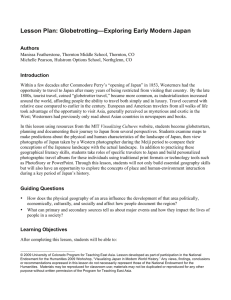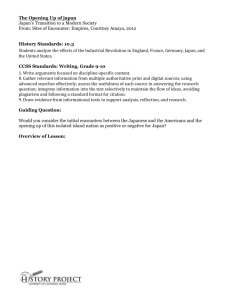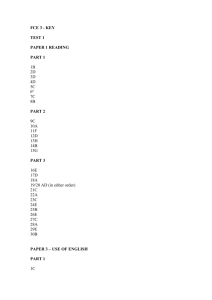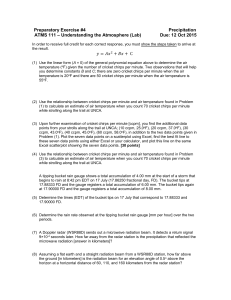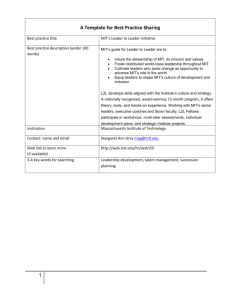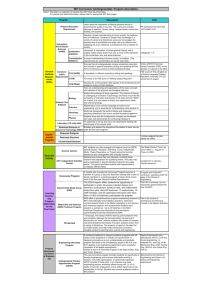10.3 - Japanese Industrialization
advertisement
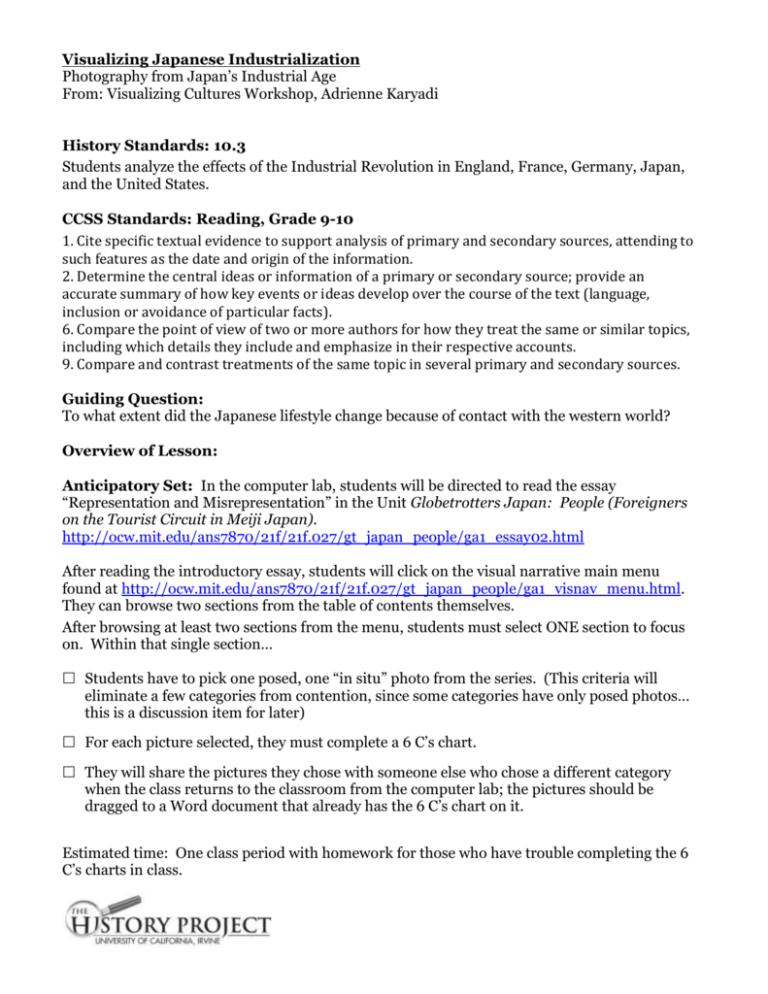
Visualizing Japanese Industrialization Photography from Japan’s Industrial Age From: Visualizing Cultures Workshop, Adrienne Karyadi History Standards: 10.3 Students analyze the effects of the Industrial Revolution in England, France, Germany, Japan, and the United States. CCSS Standards: Reading, Grade 9-10 1. Cite specific textual evidence to support analysis of primary and secondary sources, attending to such features as the date and origin of the information. 2. Determine the central ideas or information of a primary or secondary source; provide an accurate summary of how key events or ideas develop over the course of the text (language, inclusion or avoidance of particular facts). 6. Compare the point of view of two or more authors for how they treat the same or similar topics, including which details they include and emphasize in their respective accounts. 9. Compare and contrast treatments of the same topic in several primary and secondary sources. Guiding Question: To what extent did the Japanese lifestyle change because of contact with the western world? Overview of Lesson: Anticipatory Set: In the computer lab, students will be directed to read the essay “Representation and Misrepresentation” in the Unit Globetrotters Japan: People (Foreigners on the Tourist Circuit in Meiji Japan). http://ocw.mit.edu/ans7870/21f/21f.027/gt_japan_people/ga1_essay02.html After reading the introductory essay, students will click on the visual narrative main menu found at http://ocw.mit.edu/ans7870/21f/21f.027/gt_japan_people/ga1_visnav_menu.html. They can browse two sections from the table of contents themselves. After browsing at least two sections from the menu, students must select ONE section to focus on. Within that single section… Students have to pick one posed, one “in situ” photo from the series. (This criteria will eliminate a few categories from contention, since some categories have only posed photos… this is a discussion item for later) For each picture selected, they must complete a 6 C’s chart. They will share the pictures they chose with someone else who chose a different category when the class returns to the classroom from the computer lab; the pictures should be dragged to a Word document that already has the 6 C’s chart on it. Estimated time: One class period with homework for those who have trouble completing the 6 C’s charts in class. In class the next day, students will get into pairs or small groups to compare what they noticed about their photos. The entire class will discuss the attitudes motivating the photographers, and how those attitudes might have affected the Japanese who were the subjects of the portraits. Students will then brainstorm what responses the Japanese might have had to being treated in the way suggested by the photographs (Communication, Conclusions and Context parts of the 6 C’s chart). This can springboard the students into looking at the Thompson photographs of China’s people (found in the Unit John Thompson I: China and It’s People at http://ocw.mit.edu/ans7870/21f/21f.027/john_thomson_china_02/people.html), either in the computer lab during class time or for homework or as extra credit; or into a lesson on modernity in Asia generally. It will also lead to historical context around resistance like the Boxer Rebellion and possibly the Unit Toyko Modern I found at http://ocw.mit.edu/ans7870/21f/21f.027/tokyo_modern_01/index.html. Bibliography: “Years of Reform: Prologue to Revolution.” Asia for Educators: China 1750 to 1919. Columbia University. 2009. http://afe.easia.columbia.edu/tps/1750.htm#reform
